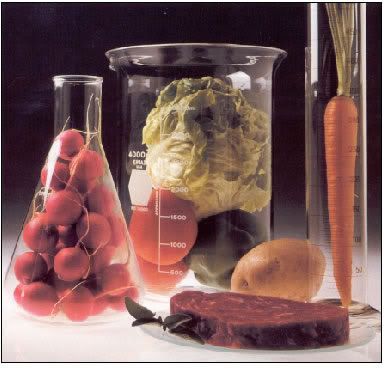Low Blood Lead Levels Do Not Appear to Be Further Reduced by Dietary Supplements.
Despite decreasing blood lead (PbB) levels, there are groups, usually disadvantaged, still at risk of lead exposure, such as children living in older, deteriorating housing and who have elevated PbB concentrations. Apart from primary prevention, such as safe removal of leaded paint, and removal of Pb from gasoline and Pb solder from canned foods, nutritional intervention is considered to play a critical role in reducing uptake of Pb. Although dietary intakes replete in nutrients such as calcium, iron, zinc, and occasionally copper have been advanced as inhibitors of Pb uptake through the gastrointestinal tract, in many human studies only diet and blood samples were analyzed for Pb and other elements such as Ca, phosphorus, and Fe. Analysis of Fe is usually undertaken because of the association of anemia and elevated PbB levels in children. Furthermore, most of the information for PbB–micronutrient intakes comes from the 1970s and 1980s when intakes of Pb via diet and PbB values were orders of magnitude higher than now and for the subjects in our studies.
As part of a longitudinal study of mobilization of Pb from the maternal skeleton during pregnancy and lactation, we measured a suite of elements from 6-day duplicate diets collected every quarter. In addition to the usual elements of Ca, Fe, and Zn, we also analyzed samples for elements such as barium and strontium that are related chemically to Ca and may play important roles in bone remodeling. For example, although it has been recognized for decades that Sr plays a role in bone formation and/or resorption, a new drug Sr ranelate has been shown not only to decrease bone resorption but, in contrast to other bone resorptive drugs, also to build up bone mass.
Discussion
The finding that none of the micronutrients is significantly related to PbB levels was surprising and inconsistent with most previous studies, but those studies usually focused on a maximum of four elements, including Ca, Fe, Zn, and Cu or Ca, P, and Mg. In a recent study, however, Schell et al. (2004) found significant inverse relationships of the PbB levels of infants at 6 months age with their intake of Zn, Fe, and Ca, but with Fe only at 12 months of age. Dietary intake was assessed by 24-hr recall at 3 monthly intervals. In a cross-sectional analysis of 747 Boston, Massachusetts, area men 49–93 years of age in the Normative Aging Study, Cheng et al. (1998) found an inverse association between PbB levels and total dietary intake of vitamin C and Fe but not for Ca, P, Zn, or vitamin D.
In an earlier metabolic balance study, Ziegler et al. (1978) observed an inverse relationship between dietary Ca and retention and Pb absorption in young infants. Other studies in humans have also observed an inverse association between PbB levels and Ca intake. In humans, the Ca–Pb interaction could arise in several ways, including binding of Pb to Ca or its derivatives in the gastrointestinal tract so that it is not available for absorption, competing with Pb in the gastrointestinal tract for transport sites and absorptive mechanisms, and altering the affinity of target tissues for Pb. Pb may also interfere with Ca-mediated cellular processes.
The presence of other micronutrients besides Ca appears to be an important factor in Pb absorption from the gastrointestinal tract. For example, Pb absorption decreases as Ca (± P) concentrations increase. Reductions in Pb absorption and retention were noted with both Ca alone (as Ca carbonate) and P alone (as Na phosphate) but Ca was much more effective than P. Dietary Ca and P were important predictors of blood Pb concentrations for children 12–47 months of age from a low-income population in central Washington, DC. Likewise, Sorrell et al. (1977) and Johnson and Tenuta (1979) observed inverse correlations between Pb and Ca intake, vitamin D, and milk-based foods. In contrast, we observed no significant association between PbB and dietary Ca or P, although there was a significant association for P (and Mg and Cu) when all micronutrients were included in the model.
Another important factor affecting gastrointestinal absorption is the relative condition of the gut, that is, whether in a fasted or non-fasted state. Radioactive and stable isotope tracer studies have shown that the absence of Ca and other minerals in the gastrointestinal tract at the time of Pb ingestion is a major reason for increased Pb absorption in fasting subjects compared with nonfasting subjects. When Ca and other minerals are present, however, differences between fasting and nonfasting subjects are not significant. Reductions in Pb absorption were also noted in subjects ingesting 203Pb in different foods, depending on the Ca, Mg, and P content of the ingested meal.
Studies using fasted and nonfasted laboratory animals, including rats, mice, and monkeys, have produced similar result to those in humans. Gastrointestinal absorption of Pb in rats was shown to decrease in the presence of a number of minerals, including several analyzed in this study (Na, Ca, K, Mg, Fe, Zn, Cu). In the Barltrop and Khoo (1975) study, low Fe, Cu, and Zn did not increase Pb absorption in rats although their overall low-mineral deficient diet resulted in a 12-fold increase in Pb absorption. They found that increases in Pb absorption due to the lack of the individual minerals containing Ca, P, and Mg did not summate to the 12-fold increase and suggested that the 12-fold increase was caused by a synergistic effect. Using several dietary regimes (high and low fat, protein, minerals, fiber, and vitamins) Barltrop and Khoo (1975) found that only the regime of added minerals decreased Pb absorption. As in the human studies, administration of P without Ca did not produce reductions in Pb retention as great as that for Ca alone or for Ca with P.
The length of time over which a study was undertaken may also be an important factor in absorption of Pb from the gastrointestinal tract. Apart from the investigations of Rabinowitz et al. (1976, 1980) of up to 210 days, the other studies involving radioactive tracers were only of short duration of less than 7 days.
A negative association between Zn and Pb has been shown in experimental animal studies to prevent tissue accumulation of Pb by reducing the inhibitory effect of Pb on certain enzymes involved in heme biosynthesis. Cerklewski (1979) observed beneficial effects of Zn with Pb in pregnant rats, but the postabsorptive interaction was less important than the intestinal interaction of Pb and Zn. However, Barltrop and Khoo (1975) found that low Zn, Fe, Mn, Cu, iodine, and molybdenum did not have any effect on Pb absorption in rats. Results have been mixed for the limited human studies that have addressed the relationship between Zn and Pb. For example, in a study of 85 fasting males and females, Flanagan et al. (1982) observed that Pb retention was not related to body Fe burden or even a 10-fold molar excess of Fe, of Zn, Co, or Ca. In a study of elderly humans, Bunker et al. (1984) found the beneficial effects of Zn to be the reverse of those found in children’s studies.
In animal experiments, Fe deficiency increased the absorption and potential toxicity of Pb. Studies in human adults and children have reached similar conclusions, although there are exceptions such as that observed by Flanagan et al. (1982), described above. In the most recent study, Schell et al. (2004) found lower dietary Fe intakes to be associated with higher PbB levels, at least through the first year of life. On the other hand, in a study of 234 boys and girls at 15 and 17 years of age, Bárány et al. (2005) found the relationships between Fe status and Pb in blood and serum to be equivocal.
There are limited data relating Pb and Mg. Rats fed Pb plus Mg had higher PbB than did rats fed Pb only, and Pb in bone in the Pb–Mg group was lower than the Pb group. The authors suggested that Mg mobilized Pb from bone with increased amounts of Mg resulted in lower retention and increased excretion of Pb. The individual role of Mg is difficult to evaluate in the rat study of Barltrop and Khoo (1975) because of the complex mineral diet. Soldatovic et al. (1993) found that supplementation with Mg in rabbits effectively reduced the Pb content in blood and enhanced Pb elimination via the urine. In the study of 23 adults ingesting 203Pb under fasting and nonfasting (full meal) conditions, James et al. (1985) measured Mg concentrations along with Ca and P, but found it impossible to separate any effects from the individual micronutrients.
To our knowledge, studies of the relationships of PbB and the other micronutrients analyzed in our investigation such as Ba and Sr or even K and Na have not been undertaken in humans, although they are critical in many bodily functions.
There are several limitations to this study. Most of our data are for pregnant adult subjects rather than children, although many studies, especially for Fe deficiency, have involved pregnant animals and humans. In addition, our cohorts comprised subjects from different countries who may have different dietary habits. However, we did not see a country effect in the analyses. Only limited conclusions can be drawn from the Fe data because early samples were not analyzed for Fe. We also have a limited number of subjects and employed a 6-day duplicate protocol, although this is outweighed by the longitudinal sampling for individuals with up to 13 collections. Because this study was focused primarily on pregnancy, we have only limited data for body weights (not presented), so the null findings may be driven by raw intake instead of body weight–adjusted intake.
Furthermore, body stores of nutrients (particularly Ca, Zn, and Fe) were not measured, and body stores of these nutrients may be a better predictor of PbB than nutrient intake. It is the body stores that ultimately up- or down-regulate absorption of metals, not the daily intake of metals. There is evidence that multiple divalent metals (including Pb) bind to the Fe transport protein DMT-1, and Fe deficiency is known to up-regulate this protein. This may be why Fe deficiency will up-regulate Pb absorption. Although biomarkers of body stores are correlated with intake, it is nonetheless possible that serum ferritin, bone density, or serum Zn would have predicted PbB, even when daily intake of Fe, Ca, or Zn does not, because these biomarkers are a better measure of long-term intake.
In summary, in our longitudinal sampling of 6-day duplicate diets in pregnant and non-pregnant females and children with low PbB values, we have not found significant relationships between PbB and the daily intake of Ba, Ca, Cu, K, Mg, Na, Zn, P, Sr, and Pb. There was, however, a significant association for P, Mg, and Cu when all micronutrients were included in the statistical analysis, perhaps reflecting a synergistic effect. Unfortunately, these three elements are not commonly analyzed in Pb studies. Although these outcomes would appear to conflict with some other studies in the literature, there is sufficient uncertainty in the literature of Pb–micronutrient relationships, except probably for Fe and Ca, to advocate that supplementation with the micronutrients analyzed here will not benefit adults and children whose Pb exposures are low PbB. However, this study should be followed up with similar human investigations incorporating varying levels of micronutrients in the diet over time.




0 Comments:
Post a Comment
<< Home